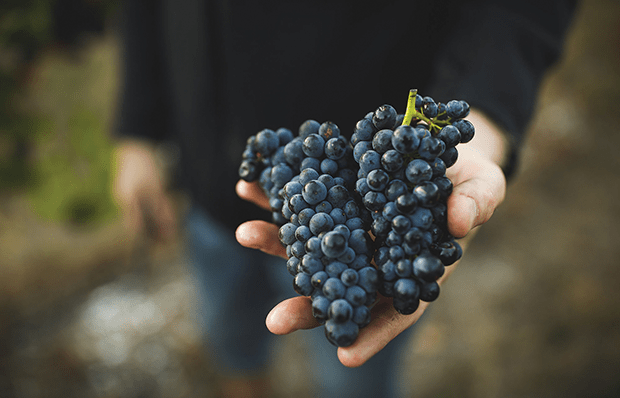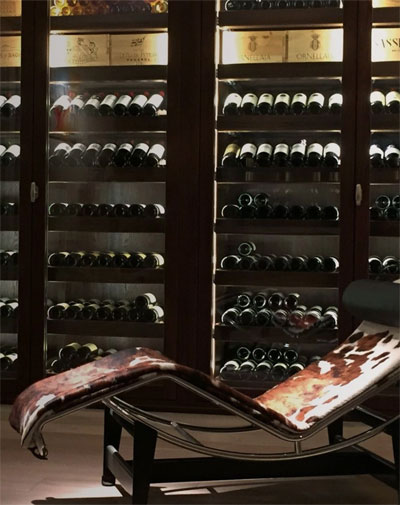Red Wines
Burgundy
Pinot Noir
France
Coste Caumartin
2023
PRODUCT ID: 0549

COUNTRY
France

REGION

GRAPE VARIETY
Pinot Noir

VINTAGE
2023
CASE (X6 BOTTLES)
€168,00
AVAILABLE STOCK: 65 BOTTLES
AVAILABLE STOCK: 65 BOTTLES

COUNTRY
France

REGION

GRAPE VARIETY
Pinot Noir

VINTAGE
2023
Country: France, Bourgogne, Cote D`or
Grape Varieties: Pinot Noir 100%
Altitude: 230 meters
Geology: a layer of lemon clay to occupy a burgundy, with the ruby robe, offering the aromas of red fruits of great intensity.
Age of vines: 35 years
Vinification: The raisins are 100% smooth, following a pre-fermentation process of 3 - 6 days at 13 ° C. Vinified in concrete or stainless steel ovens with pipes and shut-off racks, in addition to journal tastings, the fermentation is effective for 2 to 3 weeks, with a maximum temperature of 33/34 ° C. Malo-lactic fermentation lasts about 12 months at room temperature.
Tasting Notes: Its strong taste and distinctive aromas come from its sweet spices, woodland fruits and fresh red fruits.
urs.
Food Pairing: You’ll enjoy this clean and dry wine with a traditional French blue cheese that’s a great match for its deep flavor.
The history of the Domaine dates back to the time of the Great Dukes of Burgundy. (1000-1400) The place represented a whole neighborhood of Pommard. The origin of the current buildings dates back to 1610 up to 1641 the date of the well of the family. In 1793 the Domaine entered in Coste-Caumartin family thanks to the wedding of Antoine Coste. The family was reputed for its activity as ironmasters. Since then, the Domaine was already highly award-winning, including the gold medal at the Paris World-Wide Fair in 1900. The Domaine was managed by the women of the family, the Coste, Debrois, Chenot, and then the Sordet families succeeding one another till now. The Sordet family is the last family who took over the Domaine. Jerome Sordet runs the vineyards since 1988 and quickly diversified and extends the vineyards from 9 to 12 hectares. In the period 1988 - 1995 acquires two more appellations Saint Romaine and Beaune 1er Cru and builds a cellar and vat room 400m² to improve, modernize and increase production. From 2014 at the Domaine settled Benoit Sordet, who managed to improve quite the operation of the Domaine. Domaine produces 65.000 bottles per year, 25% white and 75% red wine.
Case Bottles: 6

SHIPPING FEES
For orders €100,00 and
above we deliver free to
your place
For orders below €100,00 delivery
charge €10,00 within city limits.
Red Wines
Burgundy
Pinot Noir
France
Coste Caumartin
2023
PRODUCT ID: 0549
Country: France, Bourgogne, Cote D`or
Grape Varieties: Pinot Noir 100%
Altitude: 230 meters
Geology: a layer of lemon clay to occupy a burgundy, with the ruby robe, offering the aromas of red fruits of great intensity.
Age of vines: 35 years
Vinification: The raisins are 100% smooth, following a pre-fermentation process of 3 - 6 days at 13 ° C. Vinified in concrete or stainless steel ovens with pipes and shut-off racks, in addition to journal tastings, the fermentation is effective for 2 to 3 weeks, with a maximum temperature of 33/34 ° C. Malo-lactic fermentation lasts about 12 months at room temperature.
Tasting Notes: Its strong taste and distinctive aromas come from its sweet spices, woodland fruits and fresh red fruits.
urs.
Food Pairing: You’ll enjoy this clean and dry wine with a traditional French blue cheese that’s a great match for its deep flavor.
The history of the Domaine dates back to the time of the Great Dukes of Burgundy. (1000-1400) The place represented a whole neighborhood of Pommard. The origin of the current buildings dates back to 1610 up to 1641 the date of the well of the family. In 1793 the Domaine entered in Coste-Caumartin family thanks to the wedding of Antoine Coste. The family was reputed for its activity as ironmasters. Since then, the Domaine was already highly award-winning, including the gold medal at the Paris World-Wide Fair in 1900. The Domaine was managed by the women of the family, the Coste, Debrois, Chenot, and then the Sordet families succeeding one another till now. The Sordet family is the last family who took over the Domaine. Jerome Sordet runs the vineyards since 1988 and quickly diversified and extends the vineyards from 9 to 12 hectares. In the period 1988 - 1995 acquires two more appellations Saint Romaine and Beaune 1er Cru and builds a cellar and vat room 400m² to improve, modernize and increase production. From 2014 at the Domaine settled Benoit Sordet, who managed to improve quite the operation of the Domaine. Domaine produces 65.000 bottles per year, 25% white and 75% red wine.
Case Bottles: 6

SHIPPING FEES
For orders €100,00 and
above we deliver free to
your place
For orders below €100,00 delivery
charge €10,00 within city limits.






























